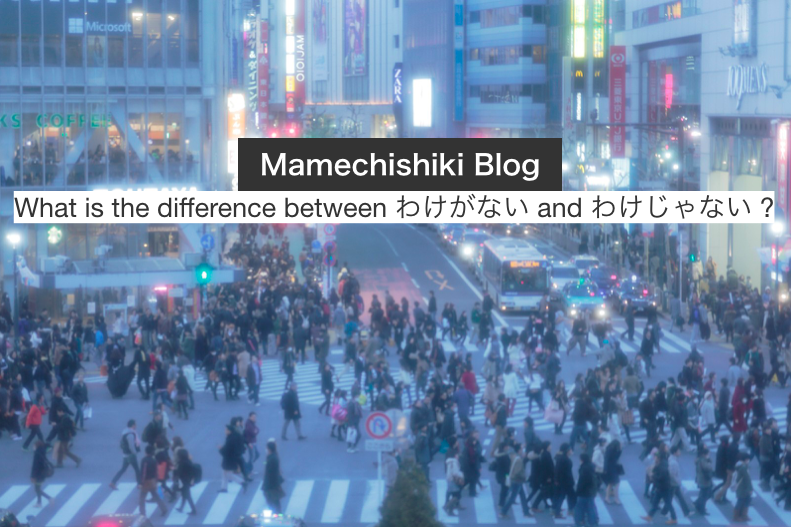When learning a language, memorizing words can be a tricky thing, especially when those look like each other.
By the way, have you ever asked yourself this kind of questions ?
If so, no worries !
In this article, I will explain the difference between two expressions that look similar but have very different meanings : わけがない and わけじゃない.
Examples are also provided below, so you do not have to open 10 tabs in your browser for looking for approximative translation in other sites. 🙂

Deep breath, eyes focused on the screen, let’s start studying !
What does mean わけがない and how to use it ?
Meaning
わけがない (wake ga nai) can also be written in kanji as 訳がない.
This expression literally means “there is no way that” or “there is no reason for that”. 訳(わけ, wake) actually means “a reason” or “a purpose”. From this, it is easy to memorize that 訳+がない refers to something that has no reason to be / no reason to occur.
In the nuance, 訳がない refers to an action, a fact or an event that cannot possibly occur. The reason for that could be moral (it is not morally accepted to do it), physical (it cannot physically happen or occur) or comes from an internal decision that cannot be disposed (there is a rule and nothing can be done against it). In some situation, wake ga nai can be used for denying actions (“there is no way that I could do that”).
Structure
Wake ga nai is commonly used as followed.
- With a verb
Verb in dictionary form + わけがない
- With an i-adjective
i-adjective + わけがない
- With a -na adjective
-na adjective with the -na + わけがない
- With a noun
noun + の or である + わけがない
Memo 1 : In more casual conversations, “が” can be removed.
Memo 2 : The formal structure of わけがない is わけがありません or わけがないです.
Examples
What does mean わけじゃない and how to use it ?
わけじゃない is the familiar form of わけではない or more politely わけではありません. In some context, it can also be written in kanji as 訳じゃない.
わけじゃない(wake ja nai) means “it does not mean that”. It is composed with わけ (“the reason” or “the purpose”) and じゃない (“not”). This expression is used for putting an emphasis on the fact that it is not because an action or a fact is happening in a given situation that this action or fact is necessary affected. Summarized in a rough example : “it is not because this orange is orange that an orange tree is orange” or “it is not because this problem is complex that it cannot be solved by someone”.
Structure
Wake ja nai is commonly used as followed.
- With a verb
Verb in dictionary form + わけじゃない
- With an i-adjective
i-adjective + わけじゃない
- With a -na adjective
-na adjective with the -na + わけじゃない
- With a noun
noun + だという + わけじゃない
Memo 1 : The formal structure of わけじゃない is わけじゃありません or わけじゃないです or わけではありません.
Examples
Summary
As a summary, you could memorize わけがない as “NO WAY” and わけじゃない as “it is not that .. but ..”.
Try creating your own sentences based on the above examples in order to appropriate yourself the two forms.

Please feel free to share your own examples in the comments part. Let’s enjoy studying together !




Comments
This explanation was very easy to understand:)
Is my writing correct?
・私がカレーを好きな訳がない。
(There’s no way I’d like curry.)
・私はカレーが好きな訳じゃない。
(It does not mean that I like curry.)
If it’s not, please teach me how to say things more naturally.
Thank you for this great explanation ! Seems more easy to use it now 🙂
Do I use it right though ?
– 東京に行ったら、寿司を食べないわけがない.
(There’s no way I’m not eating sushi when I’m going to Tokyo.)
– まずいわけじゃ ないが, お腹がすいてない.
(It’s not that it tastes bad, but I’m not hungry.)
Please feel free to correct me if it’s wrong, I’m still learning ! 🙂